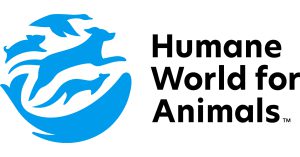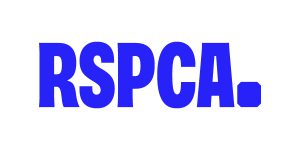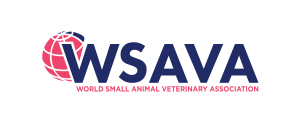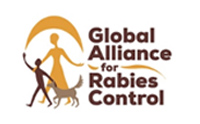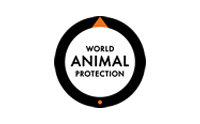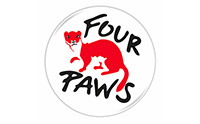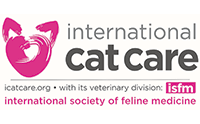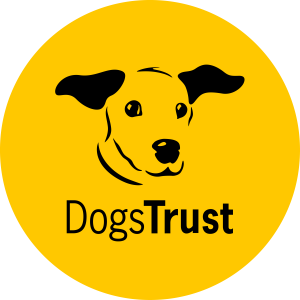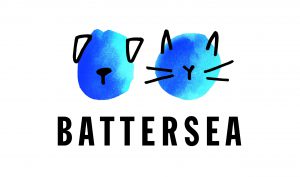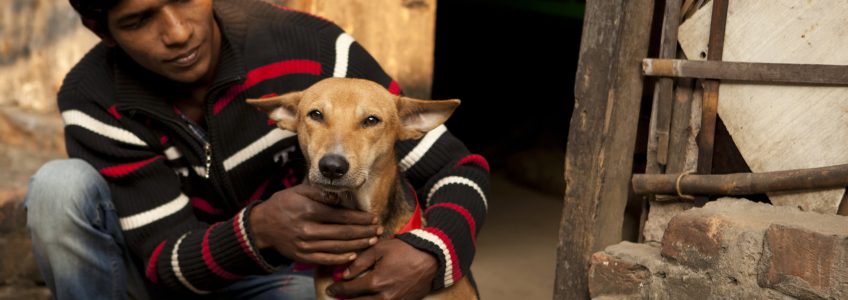
The following are our answers to your Frequently Asked Questions (FAQs) about COVID-19 and companion animal population management. ICAM’s statement on COVID-19 is available here.
1. Are animal services and goods essential?
COVID-19 is a human health crisis, but it does not justify animal suffering. Basic animal welfare needs must be met whilst maintaining social distance between people and observing good hygiene, including handwashing with soap and water.
ICAM calls on governments to define pet food and supplies (such as cat litter), animal control, care of animals already within rehoming centres (shelters) and critical veterinary care as ‘essential’ goods and services and therefore kept available for the dog and cat keeping and caring public.
2. Should feeding of roaming/stray animals continue during lock-down procedures?
The numbers of roaming dogs and cats, and the areas where they tend to congregate, exist because there have been resources available to support them. If these resources suddenly diminish due to COVID-19 restrictions, these animals will become hungry and thirsty. In their attempt to meet their welfare need for food and water, they may travel further and compete more strongly when they find resources. They risk malnutrition, aggression, disease and injury, and potentially causing nuisance for local communities. Local authorities are already stretched, so this situation needs to be avoided by the safe action of the public and animal welfare organisations.
ICAM calls on local authorities to allow residents and animal welfare organisations to continue with feeding of roaming/stray animals, including additional feeding/watering where resources are known to have been lost due to food outlets closing.
Safe feeding and watering of roaming animals:
- Maintain a 2m distance between people during feeding
- Wash hands thoroughly before and after feeding
- Wash any bowls using detergent and water
- Set-up a rota so that ideally one person, or at least no more than 2 people, are feeding at each location to reduce person-to-person transmission
- Explain feeding practices to friends/family/welfare organisations so they may take over if you become unwell
- Consider using a gravity feeder with dry food to reduce the frequency of feeding (ideas for DIY gravity feeders available online)
- Provide water as well as food
- Provision daily
- If continuing feeding practices from before the pandemic, maintain original timings and locations as much possible to maintain territories and avoid mixing of unfamiliar animals. However, human health must be paramount, so make changes if these are needed to keep people safe.
- The purpose of feeding is to maintain good welfare, if strays are unsterilised this will also support breeding and survival of puppies. Previous feeding by residents would have had the same result. After lockdown procedures have been relaxed/removed, humane population management can resume. Recording locations of females and litters during lockdown will facilitate targeting of sterilisation when reproduction control services resume.
If your community does not currently have population management interventions, post-COVID-19 is a good time to start – see ICAM website for dog and cat population management guidance.
Case study: India has a long cultural tradition of showing compassion towards animals, including feeding stray animals. The government of India has been quick to recognize they must support this to continue safely during lock-down procedures (‘Veterinary services must go on, animals can’t suffer during COVID-19, Modi govt tells states’ in The Print). The police have been requested to feed stray dogs when they are positioned on the streets and some states have provided relief funds to pay for this food. Identity cards for feeders and colony carers were already in existence – application online and by post remains open – and can be used to justify travel to a feeding location. People are asked to practice social distancing and good hygiene when feeding.
3. Should dog walking continue during lock-down procedures?
Dogs need to express normal behaviours including exploration and exercise that are commonly met through supervised walks with owners. These can be very highly motivated behaviours, that if restricted, lead to frustration, boredom and expression of unwanted behaviours such as barking and over-excitement. Dogs also need frequent and regular opportunities to toilet on appropriate substrates to avoid toileting in the house. Animal control and rehoming centres are already stretched to meet demand with reduced staffing and so every effort needs to be made to keep pets with their owners. This includes avoiding unwanted behaviours that could lead to abandonment.
ICAM calls on authorities to make allowances for dog walking throughout ‘lock down’ procedures. If required, restrictions can be placed on the time spent walking and distance travelled from the home. It should be noted that short walks during curfew hours may be needed for dogs to toilet
Safe dog walking:
- Maintain a 2m distance between people during walking.
- Maintain full control of your dog during your walk to avoid your dog running away or unwanted interactions with other dogs, animals or people that would require your intervention and risk closer contact with other people. This may require on leash walking.
- Pick up and dispose of your dog’s feces responsibly.
- Wash hands before and after walking, including if you interacted with another dog on your walk.
- Washing your dog’s paws after a walk is not required to reduce coronavirus transmission. However if you want to reduce general microbe introduction to your home, using soap and water is sufficient, there is no need to use harsher chemicals.
- If time outside your home is limited (e.g. one session of exercise) use this allotted time to walk your dog.
- Minimise time and distance spent walking to what is essential to maintain your dog’s welfare.
- Replace walks with exercise at home if possible. See ideas for enrichment at home from Dogs Trust and RSPCA.
4. Should owned cats be allowed outside?
Cats need to express normal behaviours including exploration and exercise, in many countries, this is met by allowing owned cats to roam outdoors. For most cats, this will be a highly motivated behaviour that if suddenly restricted will lead to frustration and unwanted behaviours. Animal control and rehoming centres are already stretched to meet demand with reduced staffing and so every effort needs to be made to keep pets with their owners. This includes avoiding unwanted behaviours that could lead to abandonment. As there is no evidence of transmission of COVID-19 between cats or from cats to people, cats should be allowed to maintain access to the outdoors.
Handwashing with soap and water should be practiced before and after interacting with cats to kill any virus present.
5. Should owned dogs be allowed to roam?
In some communities, allowing owned dogs to roam outside the house without supervision is a legal and normal practice and may be part of the dog’s role as a watch dog or protector of crops and livestock. This will be a highly motivated behaviour that if suddenly restricted will lead to frustration and unwanted behaviours that could lead to abandonment. There is no evidence of transmission of COVID-19 between dogs or from dogs to people. Hence, if the dog is healthy, sterilized, dewormed, vaccinated against rabies, and your community is tolerant of free roaming dogs – there should not be a need to impose additional restrictions. However, it might be the case that because of lack of knowledge and awareness of the nature of coronavirus, people are currently unsure and afraid of free roaming dogs. Under such circumstances, we recommend that some restriction is applied in terms of letting your dog roam freely so as to ensure its safety. See advice on walking dogs to mitigate frustration and unwanted behaviours.
COVID-19 restrictions are not a reason to start allowing your dog to roam freely if this was not accepted practice previously.
6. Should I pause sterilisation activities?
ICAM considers reproduction control to be fundamental to population management. However, in these unprecedented times of COVID-19 controls, human health must take priority and government restrictions may require all elective (non-essential) veterinary procedures to be paused, including sterilisation. This will be to reduce transmission between veterinary staff, animal owners and carers; and to preserve surgical equipment, including personal protective equipment (PPE), for use in human hospitals.
ICAM encourages all our dog and cat population management colleagues to follow government restrictions
It should be noted that any rebound in roaming animal populations will be limited in those populations that have benefited from reproduction control in the past, as a proportion of the population will already be sterilized. This can be contrasted to those populations controlled by culling where all remaining animals will have the capacity to breed. Using humane measures to manage dog and cat populations, including reproduction control, will have given communities greater resilience to this pandemic by limiting any increase in stray animal concerns resulting from a pause in population management activities.
Where monitoring methods for dog populations have been used, and can be repeated safely and within government restrictions, any impact of pauses in management activities can be evaluated. See ICAM website for advice on monitoring and evaluation of dog populations.
See ICAM’s video on how your past sterilisation activity has helped your community during COVID-19 ‘lock-down’:
7. What can my sterilisation team do now their work has been paused?
In many countries, organisations previously involved in dog and cat sterilisation as part of population management have been asked to pause their work. These organisations are now using their sterilisation time in other ways to help dogs, cats and communities. Here are some ideas:
- Emergency veterinary treatment will still be needed for injured and sick animals. Veterinary staff can reassign their skills to this essential treatment, practicing safe distancing and hygiene between people to minimise risks of transmission. Those without available veterinary staff or treatment facilities, can take on the coordination role between owners and carers of animals needing urgent care and a local veterinary service provider.
- Animal owners and carers sick with COVID-19 will need additional support for accessing pet food, medicines and veterinary treatment.
- In communities with roaming dogs and cats, reductions in food outlets and feeder movements are leaving animals hungry and thirsty. Organisations can help organise feeding during lock-down to ensure this is done as safely as possible (see previous FAQ re feeding stray/roaming animals).
- In order to prioritise sterilisation services once restrictions are lifted, organisations can begin to track the locations and numbers of pregnant females or litters, this can be done in collaboration with people in the local community using remote communication (phone, email, social media).
- Be available to answer calls from the local community looking for advice about roaming cats and dogs.
- Reproduction control is fundamental to dog and cat population management, however it is not the only service of the population management system. A visualisation of the whole Dog Population Management system is available on the ICAM website. Take this time to review your population management strategy and invest in the other parts of this system, including:
- Promote responsible behaviour. Bring community behaviour change campaigns online, using social media and online educational platforms.
- Strengthen DPM professional capacity. Explore online ways to meet the training needs of DPM professionals. See the relevant section in ICAM’s guide to Humane DPM for a list of online resources for strengthening DPM professional capacity
- Review the Foundations of effective DPM; legislation and enforcement, task force, advocacy and community engagement. What can you do now to research, build and strengthen these Foundations?
2nd April March 2020: These answers to FAQs are based on current evidence of COVID-19 and will be updated as new information is presented.
Further information
- For owners and carers:
- Everything you need to know about coronavirus and pets (World Animal Protection)
- Two infographics on pets and coronavirus: ‘Comfort in crisis’ and ‘Walking someone else’s dog’ (Canine & Feline Sector Group in the UK)
- For rehoming centres:
- Shelter Kit for COVID-19 (HSUS and AAWA)
- For veterinarians:
- For governments animal health departments:

